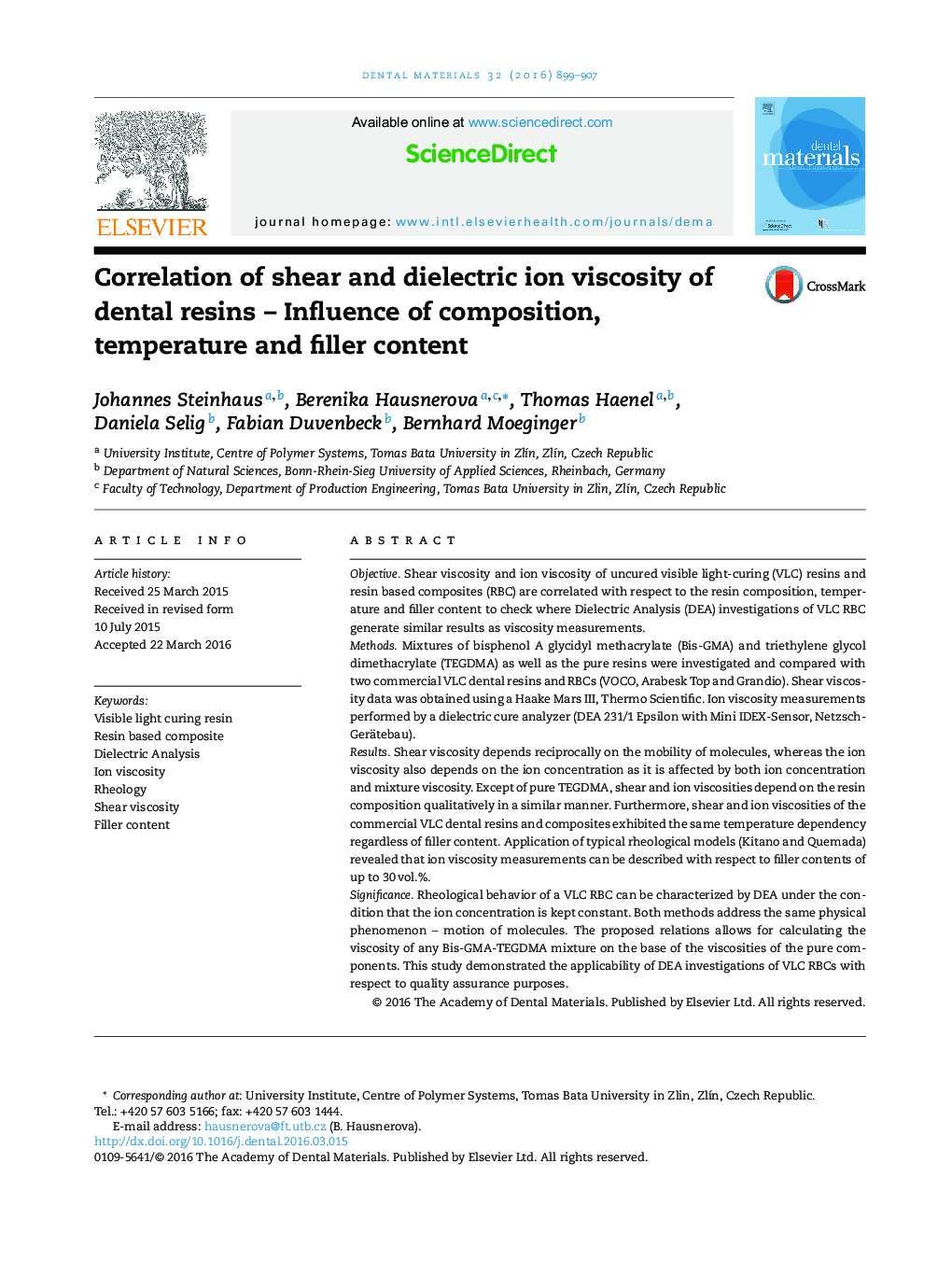| کد مقاله | کد نشریه | سال انتشار | مقاله انگلیسی | نسخه تمام متن |
|---|---|---|---|---|
| 1420405 | 986361 | 2016 | 9 صفحه PDF | دانلود رایگان |
ObjectiveShear viscosity and ion viscosity of uncured visible light-curing (VLC) resins and resin based composites (RBC) are correlated with respect to the resin composition, temperature and filler content to check where Dielectric Analysis (DEA) investigations of VLC RBC generate similar results as viscosity measurements.MethodsMixtures of bisphenol A glycidyl methacrylate (Bis-GMA) and triethylene glycol dimethacrylate (TEGDMA) as well as the pure resins were investigated and compared with two commercial VLC dental resins and RBCs (VOCO, Arabesk Top and Grandio). Shear viscosity data was obtained using a Haake Mars III, Thermo Scientific. Ion viscosity measurements performed by a dielectric cure analyzer (DEA 231/1 Epsilon with Mini IDEX-Sensor, Netzsch-Gerätebau).ResultsShear viscosity depends reciprocally on the mobility of molecules, whereas the ion viscosity also depends on the ion concentration as it is affected by both ion concentration and mixture viscosity. Except of pure TEGDMA, shear and ion viscosities depend on the resin composition qualitatively in a similar manner. Furthermore, shear and ion viscosities of the commercial VLC dental resins and composites exhibited the same temperature dependency regardless of filler content. Application of typical rheological models (Kitano and Quemada) revealed that ion viscosity measurements can be described with respect to filler contents of up to 30 vol.%.SignificanceRheological behavior of a VLC RBC can be characterized by DEA under the condition that the ion concentration is kept constant. Both methods address the same physical phenomenon – motion of molecules. The proposed relations allows for calculating the viscosity of any Bis-GMA-TEGDMA mixture on the base of the viscosities of the pure components. This study demonstrated the applicability of DEA investigations of VLC RBCs with respect to quality assurance purposes.
Journal: Dental Materials - Volume 32, Issue 7, July 2016, Pages 899–907
